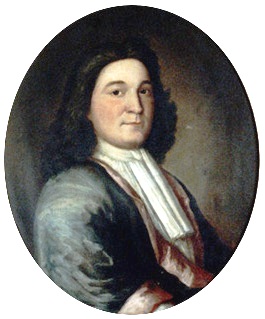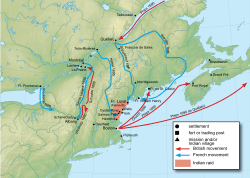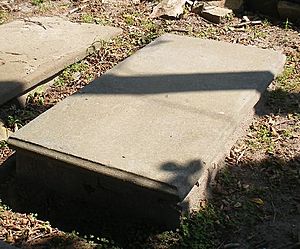John Easton facts for kids
Quick facts for kids
John Easton
|
|
|---|---|

Official portrait of Phips portrait
|
|
| 15th Governor of the Colony of Rhode Island and Providence Plantations | |
| In office 1690–1695 |
|
| Preceded by | Henry Bull |
| Succeeded by | Caleb Carr |
| 8th Deputy Governor of the Colony of Rhode Island and Providence Plantations | |
| In office 1674–1676 |
|
| Governor | William Coddington |
| Preceded by | William Coddington |
| Succeeded by | John Cranston |
| 3rd, 5th, 7th and 10th Attorney General of Rhode Island | |
| In office May 1656 – May 1657 |
|
| Governor | Roger Williams |
| Preceded by | John Cranston |
| Succeeded by | John Greene |
| In office May 1660 – May 1663 |
|
| Governor | William Brenton Benedict Arnold |
| Preceded by | John Greene |
| Succeeded by | John Sanford |
| In office 1664–1670 |
|
| Governor | Benedict Arnold William Brenton Benedict Arnold |
| Preceded by | John Sanford |
| Succeeded by | John Sanford |
| In office 1672–1674 |
|
| Governor | Nicholas Easton |
| Preceded by | Joseph Torrey |
| Succeeded by | Peter Easton |
| Personal details | |
| Born | baptized 19 December 1624 Romsey, Hampshire, England |
| Died | 12 December 1705 Newport, Rhode Island |
| Resting place | Coddington Cemetery, Newport |
| Spouse | Mehitable Gaunt |
| Occupation | Deputy Governor, Governor |
John Easton (1624–1705) was an important political leader in the Colony of Rhode Island and Providence Plantations. He spent many years serving the public before becoming the colony's governor. John was born in Hampshire, England. He sailed to New England with his father and older brother. They first settled in Ipswich and Newbury in the Massachusetts Bay Colony.
John's father supported certain religious leaders, John Wheelwright and Anne Hutchinson, who disagreed with the main church. Because of this, his father was forced to leave the Massachusetts Bay Colony. He then moved to Portsmouth on Aquidneck Island (now called Rhode Island) with many other supporters of Anne Hutchinson. Later, his father followed William Coddington to the southern part of the island. There, they started the town of Newport. John Easton lived in Newport for the rest of his life. He started working in government before he turned 30.
John Easton served the Colony of Rhode Island and Providence Plantations for over 40 years. He began as an Attorney General for the towns of Portsmouth and Newport. Soon, he held this job for the entire colony. He also worked as a Commissioner, Deputy, and Assistant, often holding several jobs at once. In 1674, he was chosen as deputy governor for two years. Part of his time as deputy governor was during King Philip's War. He even wrote a book about this war. After the rule of Edmund Andros ended, John Easton was elected as governor of the colony for five years in a row.
As governor, his main concerns were paying for King William's War, which England was fighting with France. He also had to deal with French privateers, who were like legal pirates. Other problems during his time included a smallpox outbreak in Newport. There were also issues about Rhode Island's soldiers helping other colonies. Plus, there were ongoing arguments about the borders with neighboring colonies.
John Easton was the son of Nicholas Easton, who was also a Quaker governor. John was a Quaker his whole life. When he died in 1705, he was buried in the Coddington Cemetery in Newport. His father and several other Quaker governors are also buried there.
Contents
Early Life and Moving to America
John Easton was the son of Nicholas Easton, who was a President and Governor of the Rhode Island colony. John was baptized in England on December 19, 1624. His mother, Mary Kent, died in England in 1630. In March 1634, when John was nine, he sailed on the ship Mary and John from England. He traveled with his father and his older brother, Peter.
Once in New England, the Easton family first settled in Ipswich. Then they moved to Newbury, both in the Massachusetts Bay Colony. While in Newbury, John's father became a supporter of certain religious leaders, John Wheelwright and Anne Hutchinson. These leaders had different ideas from the main church. Because of his support, John's father was disarmed (meaning his weapons were taken away) in November 1637. The next March, he was allowed to leave the colony.
He first went to Winnecunnet (later called Hampton, New Hampshire). But he was forced to leave there too. By the end of 1638, he was in Portsmouth on Aquidneck Island. Many other followers of Anne Hutchinson were also there.
Public Service in Rhode Island
John Easton was a teenager when he moved with his father to Newport in 1639. Newport was at the south end of Aquidneck Island. John lived there for the rest of his life. In 1653, when he was less than 30 years old, John started his public service career. This career would last for over 40 years.
In 1653, he was chosen to be the attorney general for the island towns of Portsmouth and Newport. The next year, he became a Commissioner from Newport. In 1655, he became a freeman from Newport. This meant he had full rights as a citizen. In 1656, he started his first of 16 years as the attorney general for the entire colony. John Easton continued to serve in many roles. In 1665, he was a Deputy. The next year, he started his first of 18 terms as an Assistant.
In 1674, Easton was elected deputy governor of the colony. He served under William Coddington. He held this job for two one-year terms. In 1676, during King Philip's War, he was replaced by John Cranston, who had more military experience. In 1675, John Easton wrote a report about the war with the Native Americans. It was called "A True Relation of what I know & of Reports & my Understanding concerning the Beginning & Progress of the War now between the English and the Indians." The next year, he was part of a special court in Newport. This court tried Native Americans accused of helping King Philip.
From 1676 to 1681, John Easton did not hold a public job. This was one of the few times he wasn't serving the public. Throughout the 1680s, he was an Assistant. In January 1690, after Edmund Andros ruled all the New England colonies for three years, Easton was one of the Assistants who wrote a letter. This letter was sent to the new English rulers, William III and Mary II. The letter congratulated them on becoming king and queen. It also told them that Andros had been captured in Rhode Island and sent back to Massachusetts.
John Easton's Time as Governor
In May 1690, all members of the General Assembly met for elections. The Royal Charter of 1663, which was Rhode Island's governing document, was read aloud. This was done just as it had been before Andros took over. The older Henry Bull was chosen as governor, but he said no. So, John Easton was chosen instead, with John Greene as deputy governor. This was a special time for Rhode Island.
Dealing with War and Privateers

The governor, deputy governor, and assistants did not have to pay colony taxes. This was because they had expenses for their official duties and did not get salaries. John Easton was governor for five years. During this time, England and its friends were fighting the Nine Years War with France. In North America, this war was known as King William's War. Other colonies asked Rhode Island for soldiers to help them. Rhode Island usually replied that the colony was very open to attack. So, its men needed to stay home.
However, in October 1690, the General Assembly agreed to raise 300 pounds for the war. The colony now had nine towns. Each town was taxed for its share of the money. New laws were also made about valuing property. Before, this was done by "guessing." Now, ships were also taxed. All ships from other colonies had to pay a tax on goods unloaded at Newport.
The war was a big burden on the colonists. But one good thing happened in July 1690. French privateers (ships hired by a government to attack enemy ships) were constantly bothering the colonies. So, an expedition of two sloops (small, fast ships) and 90 men left Newport. They were led by Captain Thomas Paine. Paine found five French ships near Block Island. He sent some men ashore to stop the French from landing. Then he moved his ships into shallow water to avoid being surrounded. A battle started in the late afternoon and lasted until night. The French ships left, losing about half their men. Paine's side lost one man and had six wounded. This victory by Paine made the people of the colony feel proud of their navy. It was Rhode Island's first victory at sea. Still, French privateers kept sailing the seas. They stole goods from the colonists. This forced the Assembly to meet again and make strict rules to collect the taxes that had not been paid yet.
Other Challenges as Governor
In October 1691, the General Assembly met in Providence. smallpox had broken out on Aquidneck Island. It was a very bad type of smallpox. So, it was almost a year before the Assembly met again in Newport.
On October 7, 1691, the Massachusetts and Plymouth Colonies joined together under one charter. William Phips was made governor. The next year, Phips told the Rhode Island colony that he was now the commander-in-chief of all military forces in New England. This went against the charters of both Rhode Island and Connecticut. Captain Christopher Almy was sent to England to deal with this problem. He was to say that the Royal Charter of 1663 gave control of troops to Rhode Island. He also presented other concerns from the colony. The decisions made in England were all in Rhode Island's favor. Rhode Island would have full control of its military during peacetime. But during wartime, it would send a certain number of men to help the other colonies. Under this rule, Rhode Island was asked to send 48 men to help the Governor of New York.
Another issue during Easton's time as governor was the witchcraft trials. These trials greatly affected the Massachusetts Colony. However, they did not spread to Rhode Island. Rhode Island had laws against witchcraft, but no one was ever put on trial for it. Historians say that Rhode Island's people had suffered too much from the strict religious ideas of other colonies. They were not quick to believe in witchcraft. Also, there was no official state church to encourage such beliefs. The colonists had more important things to worry about.
Arguments over borders with the Connecticut Colony continued. But a letter from Connecticut to Governor Easton in May 1692 was much friendlier than earlier messages. Easton replied in a kind way. This started a new time of better feelings between the two colonies. The settlers in both colonies were happy that tensions were easing.
Later Life and Death
After leaving the governorship in 1695, John Easton lived a private life in Newport. He died on December 12, 1705. He was buried in the Coddington Cemetery in Newport. Several other Quaker governors of the colony are also buried there. He was the last of Rhode Island's colonial governors who had come from the Massachusetts Bay Colony after being forced to leave. His father had been expelled from Massachusetts for following Anne Hutchinson.
Family and What He Left Behind
In 1661, John Easton married Mehitable Gaunt. She was the daughter of Peter and Lydia Gaunt from nearby Plymouth Colony. They had five children and at least 17 grandchildren. Mehitable died in late 1673, after less than 13 years of marriage. After her death, Easton married a woman named Alice, but they did not have children.
Historian Thomas W. Bicknell wrote that Governor Easton was one of the best and most effective colonial governors. He knew the colony's history very well. His skills as a judge were strong because of his long experience and careful study. He was very active and energetic, both mentally and physically. He did not show weakness or change his mind easily during his time as governor.
Popular Culture
John Easton is a character in the historical fiction book series "My Father's Kingdom" by James W. George.



